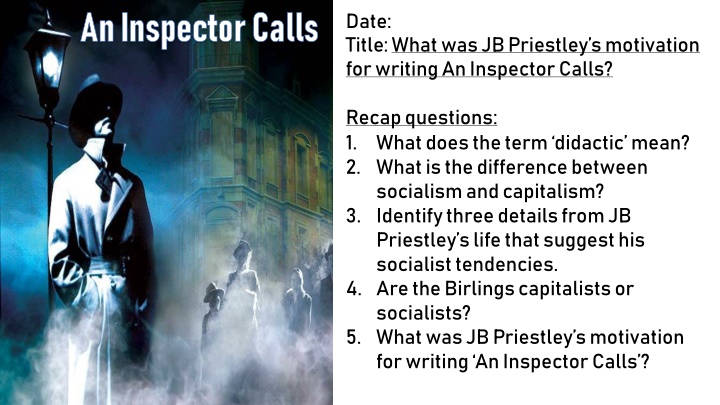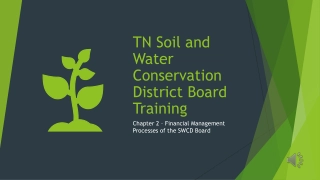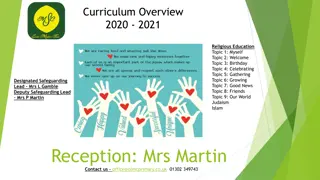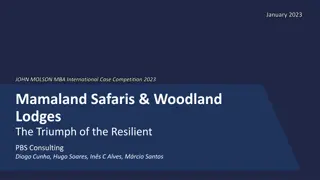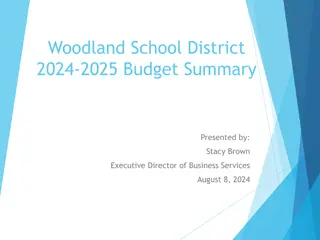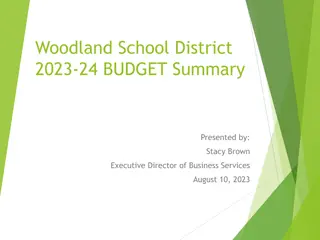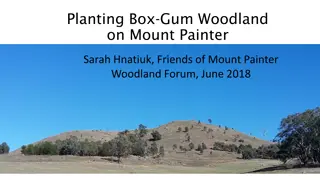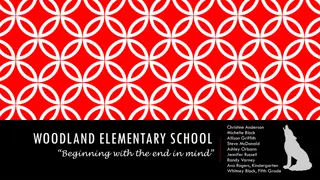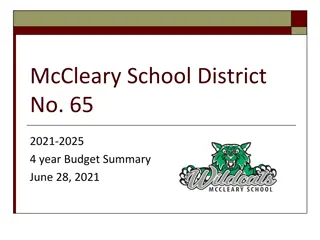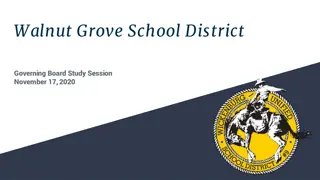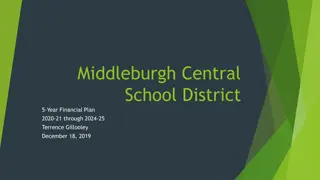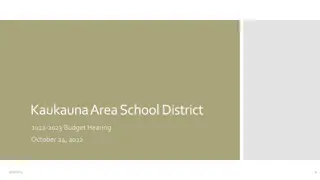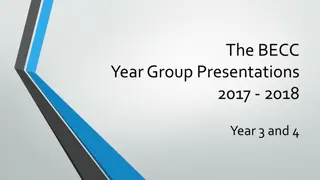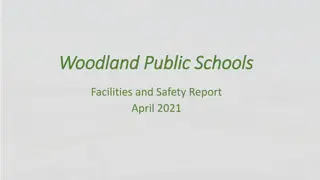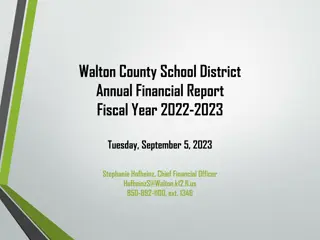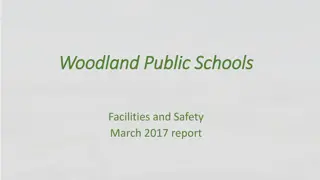Woodland School District 2017-2018 Year-End Financial Summary
This financial summary provides a detailed overview of the Woodland School District's fund balance, expenditures, enrollment, and factors affecting the total fund balance for the years 2017-2018. It includes historical fund balance data, breakdown of fund balance components, and levy expenditures.
Download Presentation

Please find below an Image/Link to download the presentation.
The content on the website is provided AS IS for your information and personal use only. It may not be sold, licensed, or shared on other websites without obtaining consent from the author.If you encounter any issues during the download, it is possible that the publisher has removed the file from their server.
You are allowed to download the files provided on this website for personal or commercial use, subject to the condition that they are used lawfully. All files are the property of their respective owners.
The content on the website is provided AS IS for your information and personal use only. It may not be sold, licensed, or shared on other websites without obtaining consent from the author.
E N D
Presentation Transcript
A n Inspector C alls Date: Title: What was JB Priestley s motivation for writing An Inspector Calls? Recap questions: 1. What does the term didactic mean? 2. What is the difference between socialism and capitalism? 3. Identify three details from JB Priestley s life that suggest his socialist tendencies. 4. Are the Birlings capitalists or socialists? 5. What was JB Priestley s motivation for writing An Inspector Calls ?
Modern Drama Coursework A coursework piece is an essay response. The response should be between 800-1500 words. It is worth 20% of the IGCSE English Literature New knowledge Level 5 Level 4 Level 3 Level 2 Assured knowledge and understanding of the text. Thorough knowledge and understanding of the text. Sound knowledge and understanding of the text Some knowledge and understanding of the text The response shows assured personal engagement and a perceptive critical style. The response shows thorough personal engagement and a sustained critical style. The response shows relevant personal engagement and an appropriate critical style. The response may be largely narrative with some evidence of personal engagement or critical style Cohesive evaluation of language, form and structure. Sustained analysis of language, form and structure. Sound understanding of language, form and structure. Some comment on the language, form and structure. Discriminating use of relevant examples in support. Use of fully relevant examples in support. Use of clearly relevant examples in support. Some use of relevant examples in support.
Explore Priestleys presentation of Sheila in the play. You must consider language, form and structure. Some of the key questions we will consider: Who is Sheila? What is her role within the family and the play? How is she presented physically? Mentally? Emotionally? What does her dialogue reveal about her character? What do her interactions with others reveal about her character? What do the stage directions reveal about her? What is she symbolic of? Why has Priestley crafted Sheila s character? New knowledge Over the new few lessons, we will be completing a close analysis of Sheila s character across the play.
The initial description of Sheila Pen to paper Questions: 1. Where are we at the start of the play? 2. Who is present? How are they dressed and, therefore, what can we imply? 3. Who is Sheila sat with? Is he a member of the family? 4. What adjective is used to describe Sheila? What might the significance of this be in appearing first? 5. How old is Sheila? 6. How is Sheila feeling at the start of the play?
Sheila: Act 1: The start of the play New knowledge Reading parts: Birling, Gerald, Sheila, Mrs Birling, Edna, Eric
Sheila: Act 1: The start of the play Pen to paper / Reflection Key questions: 1. What do the stage directions on line 8 reveal about Sheila s character and attitude towards Gerald? 2. How does Sheila address Mrs Birling in line 16? 3. What might we infer from the stage directions in line 37? 4. How does Sheila s utterance in lines 37-39 affect our perception of her relationship with Gerald? 5. In line 42, when Sheila says Yes, that s what you say , what might be suggested here? 6. What advice does Mrs Birling give Sheila between lines 43-47? How does Sheila respond? 7. What does the repetition of half playful, half serious suggest? 8. What reason is given for the gathering between lines 75 and 80? 9. Why is Sheila and Gerald s union beneficial to Birling potentially? 10. What does Gerald produce for Sheila in line 114? 11. What do we learn about Sheila s reaction from the stage directions in line 115? 12. How does Sheila describe the ring in line 119? 13. What adverb is used in line 122 to describe how Sheila views the ring? 14. In lines 122-123, what might we infer when Sheila says Now I really feel engaged ? 15. What might we infer, from line 132 when it says Sheila is still admiring her ring ? 16. How does Sheila respond in line 135 when Birling commands her attention?
Sheila: Act 1: The start of the play Having explored the presentation of Sheila at the start of the play, what one word would you use to describe her character? Pen to paper
